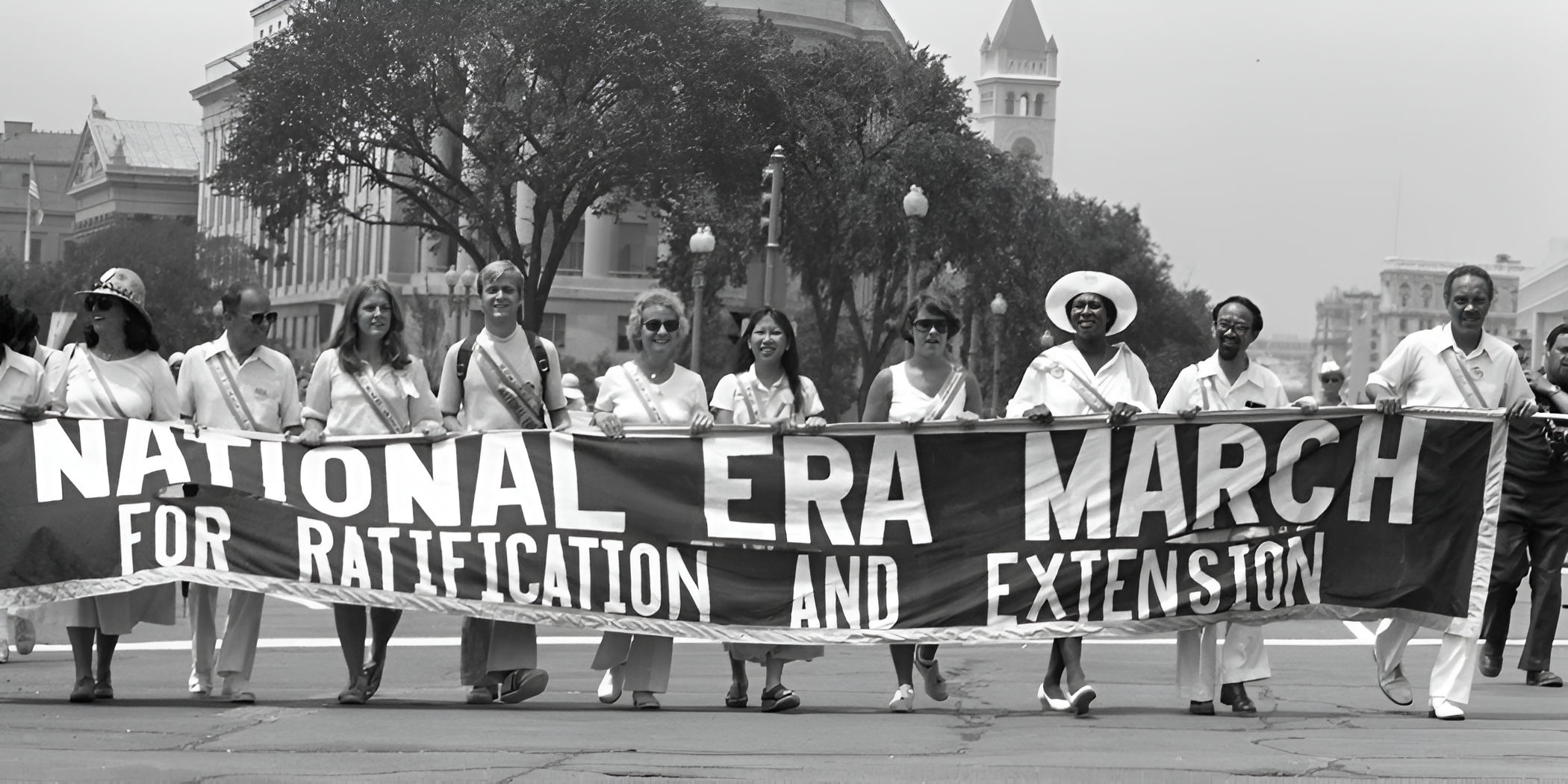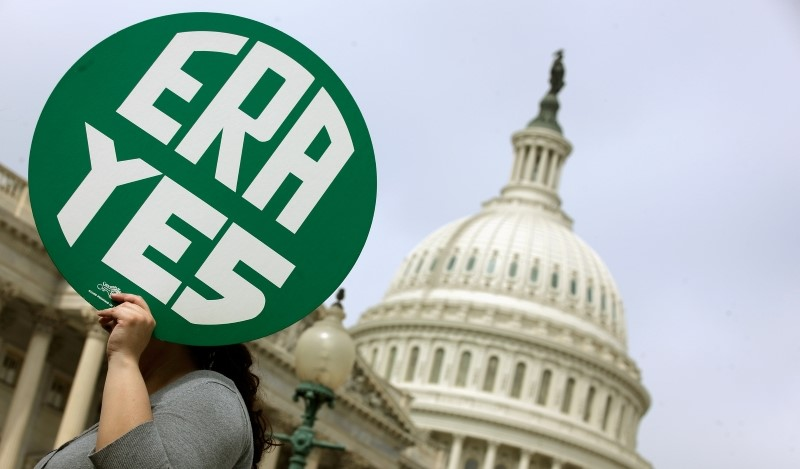The Equal Rights Amendment: Our Path to the Future
Informational article by Tanya Gupta

Just a few days before leaving office, former President Joe Biden made a significant announcement, declaring that the Equal Rights Amendment (ERA) had been ratified and officially enshrined in the U.S. Constitution. This bold statement came as a surprise, especially given the timing and the fact that the ERA had long struggled to gain the necessary support for full ratification. Biden's declaration was made even more remarkable by the fact that it was backed by over 200,000 Americans who had signed a petition calling for the amendment to be solidified as part of the Constitution. (Center for American Progress)
Despite this sudden announcement, questions remain regarding its legitimacy and impact. With Biden’s departure from office, many are left wondering what this move means for the ERA’s future and whether it marks the beginning of a new chapter for gender equality under the law. The quick pace of this decision has left many uncertain about its legal grounding and what steps, if any, will follow to ensure the amendment’s full integration into the Constitution. Will the Supreme Court weigh in? Will Congress need to act again? What’s clear is that this declaration, coming so close to the end of Biden's presidency, has opened a new chapter of questions about the ERA's fate and the ongoing fight for gender equality in America.
The Equal Rights Amendment (ERA), first drafted in 1923 by Alice Paul and Crystal Eastman, aimed to ensure gender equality under the law. More specifically, this constitutional amendment would provide a permanent foundation for a gender-equal future, focusing on improving litigation and legislation. It explicitly prohibits gender discrimination, helping women seek legal redress for issues like pay and employment discrimination while also giving Congress the power to pass laws that protect marginalized genders. Following the success of the 19th Amendment, which granted women the right to vote, advocates saw the ERA as the next step in securing women's rights. The amendment's core idea remained unchanged, though its wording evolved throughout the legislative process. The version passed by Congress in 1972 stated: “Equality of rights under the law shall not be denied or abridged by the United States or by any state on account of sex. The Congress shall have the power to enforce, by appropriate legislation, the provisions of this article.” (Brennan Center For Justice)
Although introduced in every session of Congress from 1923, the ERA gained little traction until the 1970s. This was partly due to a male-dominated Congress, which, until 1970, had only a handful of women members. However, in 1970, women lawmakers like Representatives Martha Griffiths and Shirley Chisholm pushed the ERA forward. After overcoming resistance from Representative Emanuel Celler, the ERA passed both houses of Congress in March 1972 with overwhelming bipartisan support. It was sent to the states for ratification with a seven-year deadline. (Brennan Center For Justice)
Within a year, 30 states ratified the ERA, but momentum pushing for this amendment slowed as conservative groups, aligned with the growing religious right, mounted opposition. Phyllis Schlafly, an Illinois lawyer, led the STOP ERA campaign, claiming the amendment would lead to gender-neutral bathrooms, same-sex marriage, and women in combat. The opposition was effective, especially among Republicans. Although the Republican party had originally supported the ERA in 1940, many lawmakers shifted against it, creating a stalemate. By 1977, only 35 states had ratified the ERA. Despite Congress extending the deadline by three years, no new states joined, and five states rescinded their ratification. In 1982, after the extended deadline passed, the ERA's defeat seemed inevitable. However, over the next decades, much of the ERA's intended goals were achieved through the courts and legislation. Despite great progress, gender discrimination remained prevalent, seen in wage gaps, sexual harassment, violence, and unequal representation in American institutions. (Brennan Center For Justice)
In recent years, the movement gained significant momentum, driven by a wave of women’s activism, including the Women’s March on Washington, the #MeToo movement, and a record number of women elected to Congress and state legislatures in 2018. The ERA gained national attention in 2017 when Nevada became the first state to ratify it since 1977 and the 38th state overall, finally pushing the amendment past its long-standing stagnation and sparking renewed hope for its passage. With the Constitution requiring three-quarters of states, or 38, to ratify an amendment, this resurgence inspired lawmakers and advocacy groups like the ERA Coalition to prioritize the issue and continue pushing for constitutional recognition of equal rights for women and all marginalized genders. (Brennan Center For Justice)

However, although 38 states have ratified the Amendment, it is not yet officially enshrined in the Constitution, as ex-president Biden insinuated. A senior Biden administration official clarified that Biden was not taking executive action but was simply “stating an opinion that it is ratified.”
“He is using his presidential influence to emphasize his belief – which aligns with leading constitutional scholars and the American Bar Association – that it is not a matter of should be, but that it is already the 28th Amendment of the Constitution,” the official explained. (CNN)
Biden based his position on the American Bar Association's opinion, which states that the Equal Rights Amendment has no time limit and that the Constitution’s framers prevented states from rescinding their ratification votes. However, Archivist Shogan and Deputy Archivist Bosanko said in December that the amendment cannot be certified due to existing legal decisions, including rulings from the U.S. Department of Justice in 2020 and 2022, which confirmed that ratification deadlines are enforceable. Ultimately, the final interpretation of the Equal Rights Amendment, including whether it will be officially recognized in the Constitution, will rest with the courts. This leaves the issue unresolved for now, with the legal system playing a key role in determining the ERA’s future. (CNN)
While the Equal Rights Amendment has garnered significant support and has been ratified by 38 states, its official inclusion in the Constitution remains uncertain due to legal and procedural challenges, particularly concerning the ratification deadline. Despite President Biden's strong stance and the backing of the American Bar Association, the issue hinges on the legal interpretation of these deadlines and the authority of the courts. Moving forward, the future of the ERA will depend on judicial rulings and potential legislative actions that could clarify its status, making it clear whether the amendment will be officially recognized as part of the Constitution or whether further steps will be needed to secure its place in American law.
